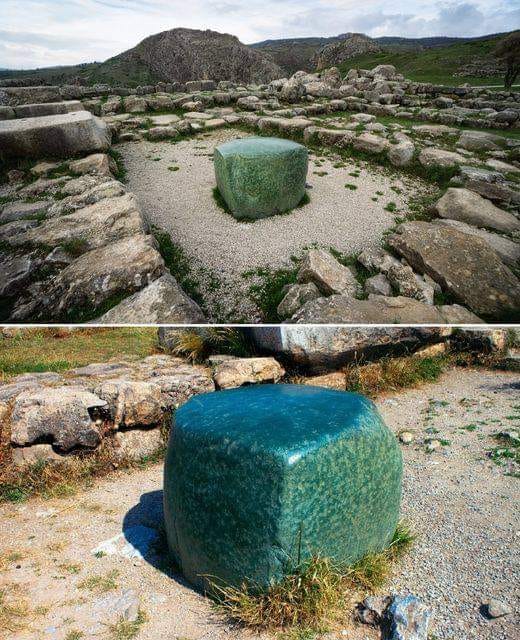Nestled in the central Anatolian region of modern-day Turkey lies the ancient city of Hattusa, once the powerful capital of the formidable Hittite Empire. This Bronze Age stronghold, stretching across nearly two square kilometers, stands as a remarkable testament to the architectural brilliance and artistic achievements of an ancient civilization that held sway over much of the Near East. At its peak, Hattusa was home to a bustling population estimated between 40,000 and 50,000 individuals, who lived amid a complex array of grand palaces, monumental gates, and temples adorned with intricate decorations. The city was not merely a political center but a hub of cultural and religious life, reflecting the sophistication and influence of the Hittite people.

The ruins of Hattusa, though weathered by centuries, continue to astonish archaeologists and visitors with their enduring strength and craftsmanship. The stonework found throughout the site is nothing short of extraordinary. Builders of the time employed tightly fitted polygonal masonry, creating walls that have withstood millennia of natural wear and seismic activity. Many of these stones display perfectly circular drill holes, a technological feat that suggests a highly advanced knowledge of engineering for the era. Relief carvings still visible on surviving walls depict images of warriors in full regalia, lions that once symbolized power and protection, and sphinxes that echoed the influence of neighboring cultures such as Egypt. These carvings serve as both artistic expressions and historical records, offering modern observers a vivid glimpse into the values, beliefs, and daily lives of the Hittites.
Among all the remnants of Hattusa, there is one artifact that has captivated the imagination of scholars, tourists, and mystics alike — the Green Stone. Unlike the majority of the city’s construction, which consists of grey or tan masonry, this unique stone stands out for its polished surface and striking green hue. Carved into a near-perfect cube, the Green Stone is believed to be made of nephrite, a mineral commonly referred to as jade. Its reflective surface and unusual color have earned it both reverence and mystery. Located within the ruins of one of Hattusa’s temples, the Green Stone has become a focal point for those visiting the site, often drawing more attention than even the massive gates and walls that surround it. The stone’s purpose remains unknown, but its presence has inspired a wide array of theories — some grounded in archaeological science, others leaning toward the mystical or speculative.
Some researchers suggest that the Green Stone served a ritualistic function, possibly used in religious ceremonies due to its placement within what is thought to be a sacred space. Others have hypothesized that it might have been an offering or a symbol of power, perhaps imported from a distant land and valued for its rarity and beauty. Still, there are those who speculate that the stone holds some deeper, even cosmic significance, connecting it to ancient myths or energies that have long since been lost to history. Whatever its original purpose, the Green Stone continues to invite curiosity, inspiring both awe and speculation from those who encounter it.
Yet, the story of Hattusa is not solely one of grandeur and achievement. It is also marked by a mysterious and abrupt end. In the 12th century BC, the city was suddenly abandoned. Unlike some ancient cities that gradually declined due to economic or environmental factors, Hattusa’s fall appears to have been rapid and unexplained. There are no definitive records detailing the reasons for its desertion, and the evidence left behind only deepens the enigma. Some theories point to invasions by foreign tribes, such as the enigmatic Sea Peoples who wreaked havoc across the Mediterranean during this period. Others suggest internal strife, resource depletion, or climatic shifts that may have made the area uninhabitable. Despite extensive research, the precise cause remains elusive, adding a layer of intrigue to the city’s already compelling narrative.
Walking through the ruins of Hattusa today, visitors cannot help but feel a sense of wonder mixed with melancholy. The once-vibrant city, now silent and still, echoes with the ghosts of a civilization that once dominated a significant part of the ancient world. Each stone, each carving, and each pathway seems to whisper stories of a time when kings and priests, artisans and warriors, all moved through its grand streets. The Green Stone, in particular, serves as a silent witness to both the rise and fall of this ancient empire. Its presence invites reflection not only on the mysteries of Hattusa but on the impermanence of human achievement. What was once a symbol of power and prosperity is now a relic of a bygone era, challenging modern observers to piece together the fragments of history and to consider the legacies that ancient civilizations leave behind.
Hattusa remains one of the most significant archaeological sites of the ancient Near East, not just because of its scale or the artistry of its ruins, but because of the questions it poses and the sense of continuity it offers between past and present. As archaeologists continue to uncover more details about its construction, its people, and its sudden demise, the city holds a mirror to modern society — revealing both the potential of human ingenuity and the fragility of civilization. The Green Stone of Hattusa, glistening under the Anatolian sun, stands as a timeless symbol of a culture that once thrived and now beckons us to remember, to explore, and to learn from the echoes of antiquity.





